Water insecurity is a lack of safe, reliable, sufficient, and affordable water for a thriving life. Being water insecure involves inadequate or inequitable access to water for drinking or basic sanitation. A common misunderstanding is that human water insecurity mainly comes from living in droughts, deserts, overexploited aquifers, or other conditions of physical water scarcity. But that’s incorrect. Most water insecurity is created by humans: through the institutions we create to govern and distribute water, laws that determine who owns water, and the price of water. These are the main determinants of who can reliably access it for drinking and sanitation—and it’s why we find human water insecurity even in places where water is physically abundant.
Water security is defined as the ability to access and benefit from affordable, adequate, reliable, and safe water for general well-being and a healthy life.
The cost of water will very likely increase. Your water bill comes from your local water utility. Most water utility costs are related to infrastructure — water mains, pumps, tanks, treatment plants, and meters, for example — but the cost of wholesale water supplies is also significant. Colorado River water is delivered on a wholesale basis to some, but not all, water utilities in Central Arizona. The cost of these deliveries is passed on to customers. The cost of wholesale Colorado River water delivered through the Central Arizona Project will increase due to shortages.
Different water utilities depend on wholesale supplies from the Central Arizona Project to varying degrees. Those that are more dependent will experience cost increases that are relatively higher. Many water utilities have access to alternative supplies — groundwater, reclaimed water, and Salt and Verde River water, for example — but alternative supplies and the infrastructure necessary to deliver them may be more expensive, and increased costs will be passed on to customers. Costs for water for replenishment will likely rise, either directly through a rate increase or indirectly through property taxes.
Colorado River shortages may impact tap water deliveries for “direct use” municipal water providers. For “indirect use” municipal water providers, shortages will impact the aquifers by reducing the amount of recharge. In Central Arizona, less than 350,000 acre-feet per year of Colorado River water is used directly at surface water treatment plants. This compares with total Colorado River water deliveries in Central Arizona during non-shortage years of more than 1,600,000 acre-feet annually. Fundamentally, this means that Central Arizona can withstand some Colorado River shortages without impact on tap water deliveries. The impact of shortages will also fall on aquifers because there will be less Colorado River water available for recharge and replenishment and more finite groundwater will be pumped.
Several reservoir and water management decisional documents and agreements that govern the operation of Colorado River facilities and management of the Colorado River are scheduled to expire at the end of 2026. These include the 2007 Colorado River Interim Guidelines for Lower Basin Shortages and Coordinated Operations for Lake Powell and Lake Mead (2007 Interim Guidelines), the 2019 Drought Contingency Plans, as well as international agreements between the United States and Mexico pursuant to the United States-Mexico Treaty on Utilization of Waters of the Colorado and Tijuana Rivers and of the Rio Grande (1944 Water Treaty).
The Bureau of Reclamation announced its intent to prepare an Environmental Impact Statement for post-2026 operations and solicited public comments on the scope of specific operational guidelines, strategies, and any other related issues that should be considered in the upcoming Environmental Impact Statement. This input was used to develop the proposed federal action, which allows for developing robust operating guidelines for Lake Powell and Lake Mead without precluding upstream or downstream activities needed to protect critical reservoir elevations at Lake Powell and Lake Mead. The action also is intended to allow for the development of innovative and flexible operating guidelines that provide improved predictability of water availability and enhanced opportunities for conservation.
Tools
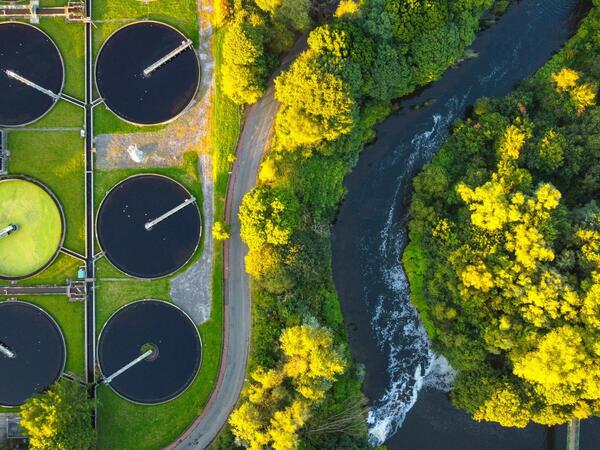
ASU CuRVE Project
The Arizona Colorado River Visualization Enterprise (CuRVE) is an ASU developed, interactive, visualization-based tool that enables stakeholders to explore datasets and analyses regarding the impacts of Colorado River…
Fact sheets
Research and policy briefs

How Arizona Municipal Water Providers Are Regulating Large-Volume Water Users
Recognizing the need to manage water supplies sustainably and cognizant of public concerns about long-term availability, at least nine large municipal water providers in Arizona have passed ordinances imposing…
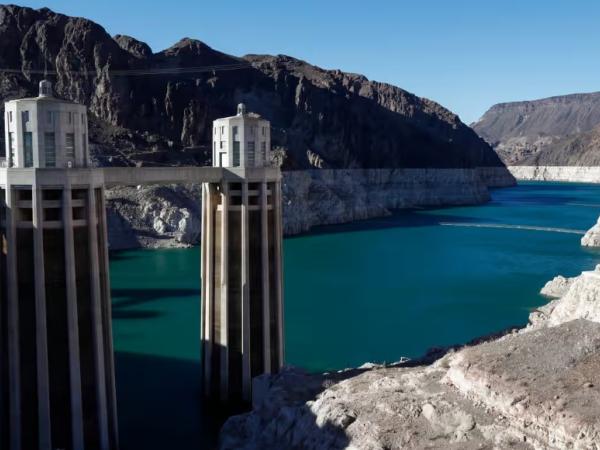
Arizona Guide to the Expiration of the 2007 Operating Guidelines for Lakes Powell and Mead
In response to drought and declining reservoir levels, in 2007 the seven states that share Colorado River water agreed to new guidelines for managing the system; the guidelines and additional measures will expire in…
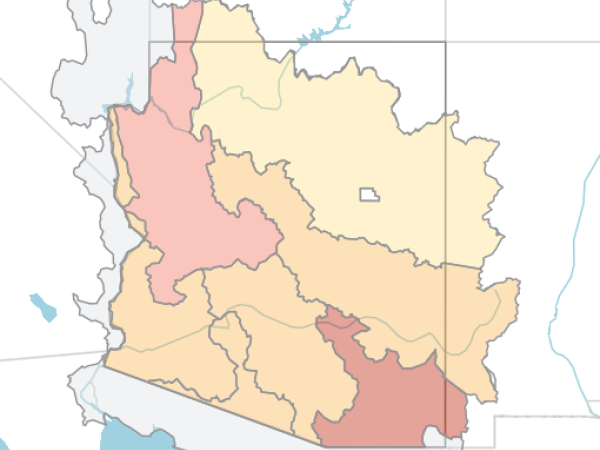
Research brief: Declining freshwater availability in the Colorado River Basin threatens sustainability of its critical groundwater supplies
The Colorado River Basin, a crucial water source for several U.S. states and Mexico, is facing a severe and ongoing decrease in freshwater – both surface and groundwater. This decline is mainly due to the changing…
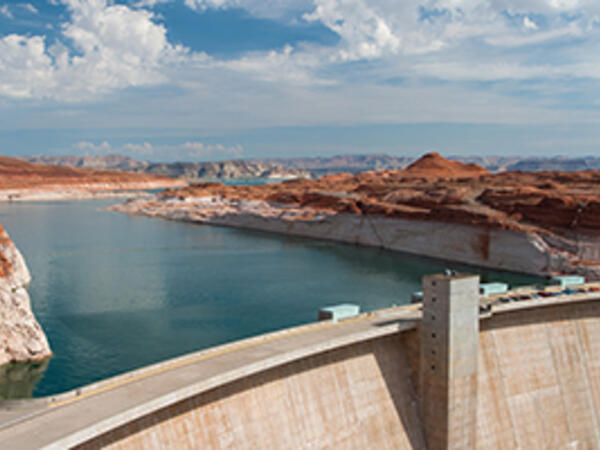
Floating Pools & Grand Bargains
Negotiations over the future of the Colorado River hinge on a bold new idea: Floating Pools — reserved water storage designed to reduce conflict and avoid litigation between Upper and Lower Basin states. Our new report…
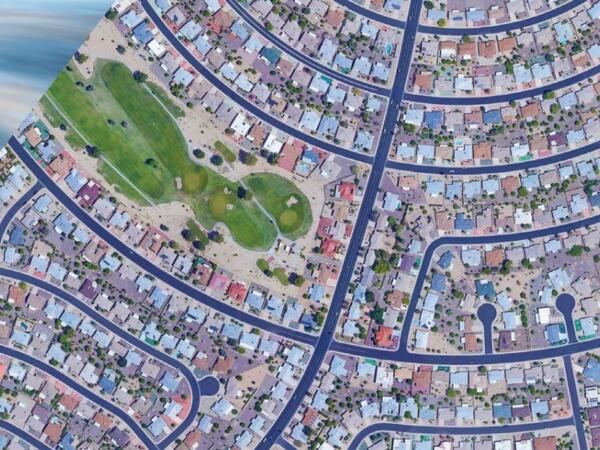
More Elusive Than Ever: Arizona’s Assured Water Supply Protections Under Colorado River Shortages and Groundwater Scarcity
In the state's most urban areas, Arizona's Groundwater Management Act prohibits the sale of subdivision lots that lack a 100-year assured water supply. Allowing groundwater to qualify as an assured supply conflicts with…
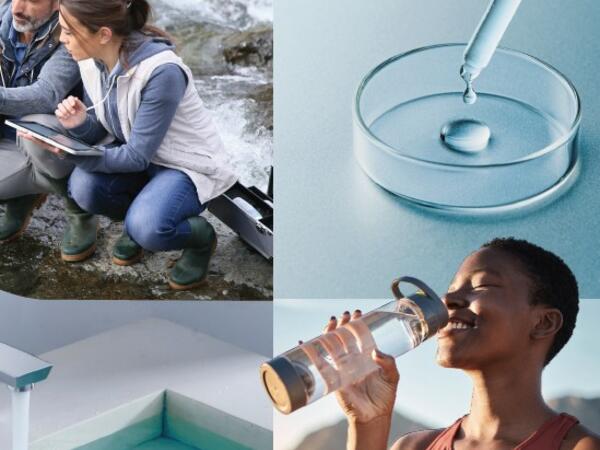
2024 Arizona Water Innovation Initiative Year in Review
We in the Arizona Water Innovation Initiative (AWII) are doing our part to develop innovative solutions to water challenges across the state with our five strategic priorities, as well as several cross-cutting…
Newsletters
Interested in keeping up with our events, news, and resources? Sign up for our newsletter today!
Sign up